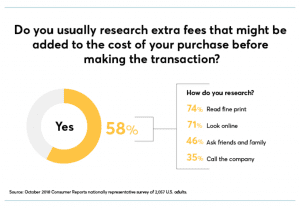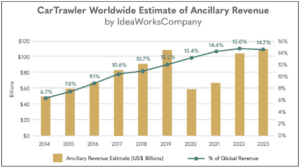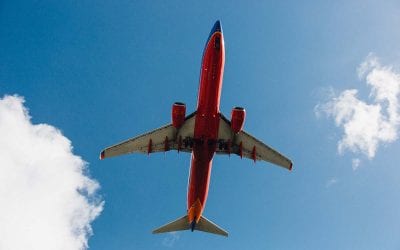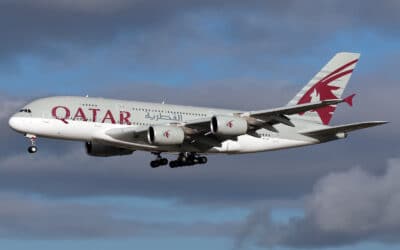Airline extra fees and frequent flyer deals will surpass the 2019 record industry income.

Jay Sorensen, the president of IdeaWorksCompany, is known as the world’s resource for ancillary income. He studies ancillary revenue, a la carte pricing, loyalty marketing, and airline retail. Without these fees, the airlines would not have any profits. The importance of ancillary fees and frequent flyer income can not be underestimated.
Earlier this year, IdeaWorksCompany reported the ancillary revenue disclosed by 65 airlines for 2022. These statistics were applied to a larger list of 125 airlines to provide a global projection of ancillary revenue by the world’s airlines for 2023. The ancillary revenue noted in this study is generated by activities and services that yield cash flow beyond customers’ transportation from A to B. This wide range of activities includes commissions gained from hotel bookings, the sale of frequent flyer miles to partners, and a la carte services. It’s the a la carte portion, which includes baggage and seat assignment fees, that represents the share directly paid by consumers.
The importance of ancillary fees and frequent flier deal income is essential to the airlines’ bottom line.

“Low-cost carriers continue to have the edge on driving ancillary revenue streams, accounting for approximately 31% of market share in this area. However, we are increasingly seeing US airlines gaining momentum with the successful rollout of loyalty programs and frequent flyer benefits. I expect airlines in Europe and the rest of the world to note this development and evidence of the actual returns it’s bringing in terms of yield.
“As passenger numbers continue to rise, we expect airlines to pivot and devise new ancillary revenue streams. Within our partner base at CarTrawler, we’re seeing greater demand for including car rental services in loyalty programs so airlines and hotel groups can reach a wider customer base with the most relevant rewards. Next year, we expect this business area to expand further as we continue to invest and deliver on our company strategy by enhancing our proposition through innovation.”
Record result is built upon solid fundamentals

- Many more people are flying. IATA predicts a larger than 28 percent increase in global airline traffic in 2023 compared to 2022, with a fantastic gain of more than 800 million passengers.
- Low-cost carriers are grabbing travelers. For 2020, IdeaWorksCompany calculated global low-cost carrier market share at 25 percent. By 2022, the LCC share jumped above 31 percent. Simply said, coming out of the pandemic, the best ancillary revenue producers carry more passengers than ever.
- More carriers are adopting assigned seat fees. Once limited mainly to LCCs, fees for assigned seating now appear in the booking paths of global network carriers. For many airlines, the revenue rivals that of checked baggage. The trend has become so widespread that some carriers now charge fees for “better” seats in business class.
- Co-branded cards deliver billions more. Fifteen top-performing airlines disclosed a year-over-year frequent flyer program revenue gain of $8.3 billion for 2022. It was a giant 41 percent increase. The carriers include American, GOL, LATAM, Qantas, and United. Continuing growth of this activity is also expected in 2023.
With the passing of every year, ancillary revenue is less revolutionary and becomes more of an everyday component of the airline business. It dependably delivers revenue in good times and bad.
2023 marks a return to normalcy

The chart below displays two truths presented to consumers for the past decade. Globally, passenger fares are on a declining trend. Secondly, ancillary revenue is a contrasting revenue source and has increased in the past decade. 2022 was an outlying year when airlines generated big yields from a surge in consumer demand. Likewise, pandemic-period travel changed the a la carte buying behaviors of travelers. They eagerly purchased the extra comforts and conveniences. Leisure travelers eagerly purchased early boarding, extra legroom seats, and assigned seating in the front of the cabin. This explains the 2022 blip in the red line of per-passenger ancillary revenue.
Last year, it was unknown if this higher activity level would continue. 2023 reveals consumers reverting to traditional buying patterns. Per-passenger ancillary revenue returned to a predictable trend line. Likewise, global one-way fares dipped off the aberration of 2022. Travelers can anticipate that 2024 fares will drop even further. But the last four years have taught the industry an important lesson – ancillary revenue has proven to be a very resilient source of income.

This article was edited from a press release received from IdeaWorksCompany.
READ ALSO:
5 airline passenger rights most travelers don’t know they have
21 tips to get cash from ATMs safely and securely while traveling

Charlie Leocha is the President of Travelers United. He has been working in Washington, DC, for the past 14 years with Congress, the Department of Transportation, and industry stakeholders on travel issues. He was the first consumer representative to the Advisory Committee for Aviation Consumer Protections appointed by the Secretary of Transportation from 2012 through 2018.





